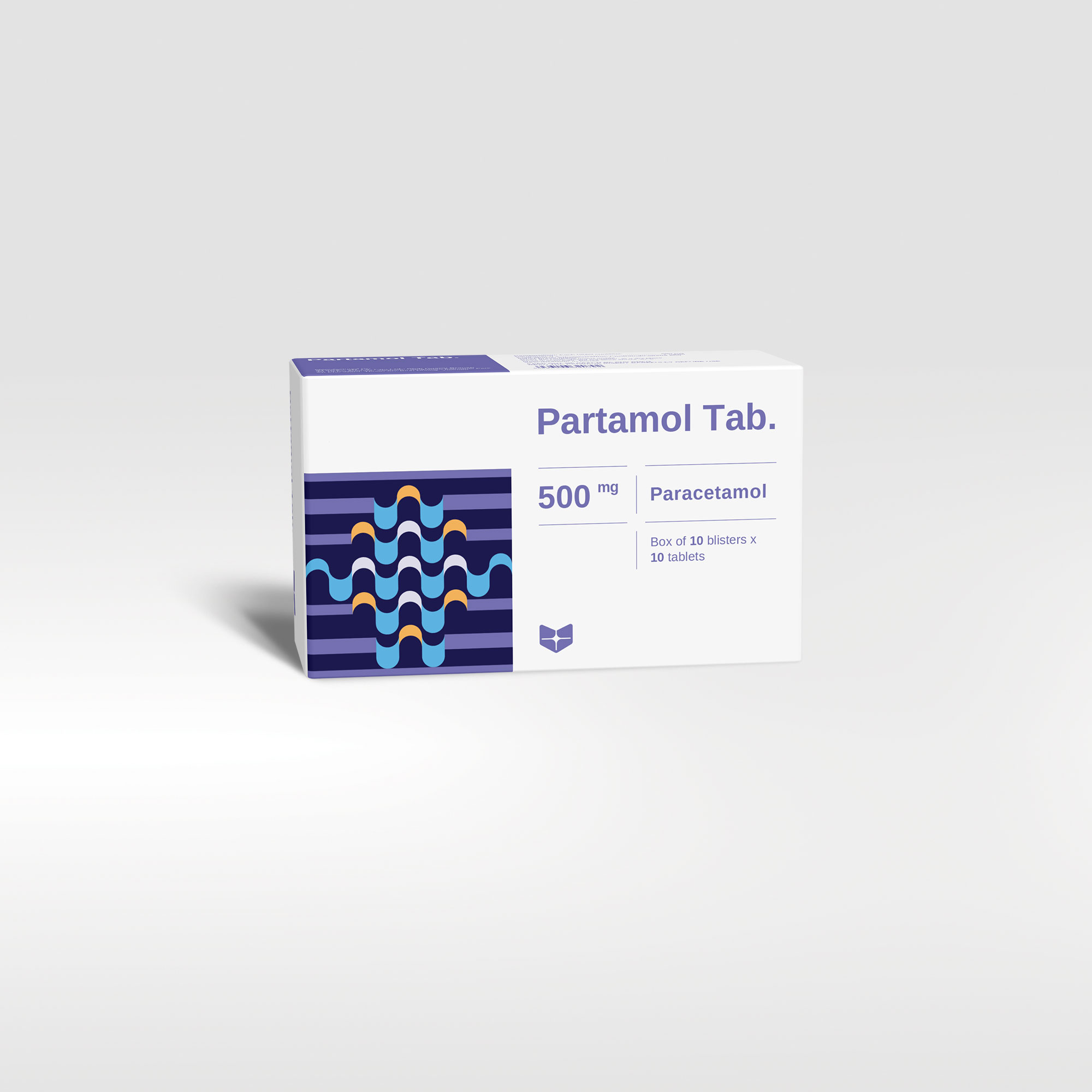Partamol Tab. OTC
Partamol Tab. contains paracetamol. In equal doses, the degree of analgesia and antipyresis produced by paracetamol is similar to that produced by aspirin. Paracetamol lowers body temperature in patients with fever but rarely lowers normal body temperature.
| Pack size | Box of 30 tablets, 50 tablets, 100 tablets. Bottle of 200 tablets, 300 tablets, 500 tablets. |
| Shelf-life | 60 months |
| Composition | Paracetamol |
| Dosage forms and strengths | Tablet: 500 mg |
Product code :



